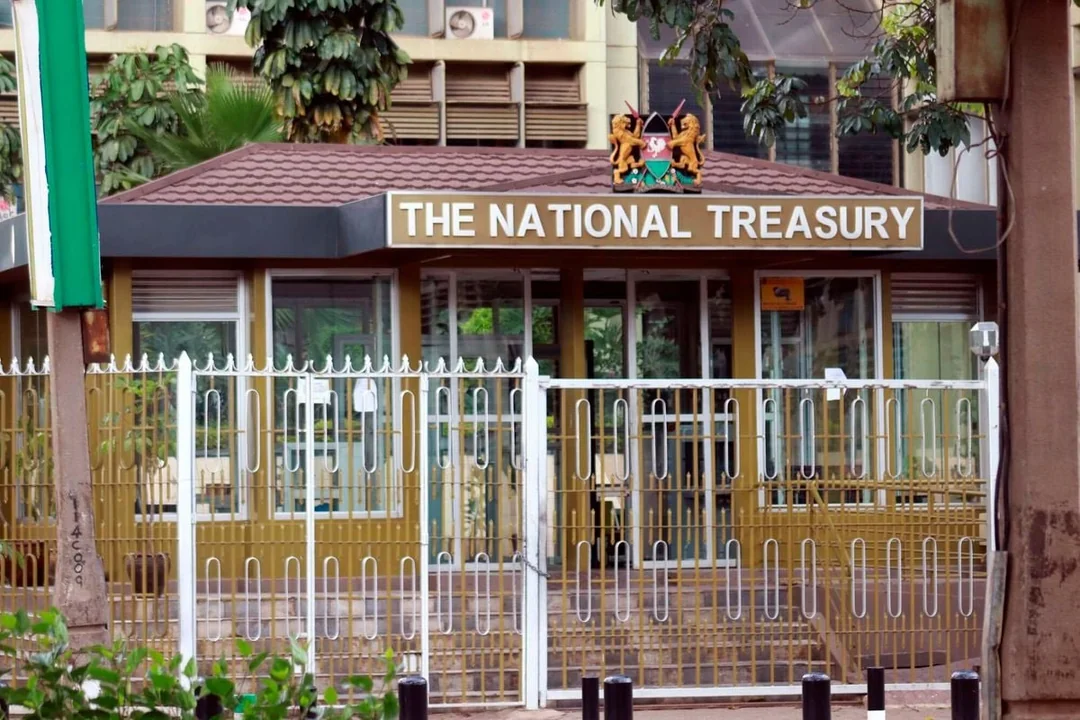
The IMF projects that Kenya’s economy will surpass Angola
According to an International Monetary Fund (IMF) prediction, Kenya will surpass Angola to rank fourth in sub-Saharan Africa this year, behind South Africa, Nigeria, and Ethiopia.
Kenya is expected to hold that position till the end of 2029.
Kenya’s GDP was projected to have increased from $113.7 billion (Ksh13.37 trillion at the time) in 2022 to $108.9 billion (Ksh15.14 trillion) last year, based on the current exchange rate.
With a two-year lead over Nigeria, Ethiopia is expected to become the second-largest economy in the region, surpassing Kenya.
Ethiopia’s GDP grew further, surpassing Kenya’s in 2020 and reaching an expected $159.74 billion (Sh21.165 trillion) in 2023. This increase caused the gap between Ethiopia and Kenya to expand.
It is anticipated that Ethiopia’s economy will remain stable at number two for the next three years, till 2029.
However, there are concerns that Ethiopia’s GDP, or the number of products and services generated there, may be exaggerated. The nation, which was one of the African nations that had defaulted on a debt, came out of a two-year civil war that had devastated its economy in 2022.
The head of macro strategy at the investment management firm FIM Partners UK Ltd, Charlie Robertson, called the Ethiopian currency rate a “fantasy exchange rate.”
Robertson responded by email, saying, “Ethiopia is maintaining a hugely overvalued exchange rate which is not supported by reality.”
The official rate for the Ethiopian Birr is 57, but a realistic rate is closer to 97 against the dollar, according to the FIM Partners FX model.
The IMF projects that Ethiopia’s economy grew by 7.2 percent last year, the strongest GDP growth in the Sub-Saharan region, from a base of $118.97 billion.
Kenya’s GDP, however, is predicted to have expanded at a slower rate of 5.5 percent in 2023 as it emerged from a year marked by drought and tight global financial markets as a result of the conflict in Ukraine.
This month, Kenya is anticipated to reveal its official GDP figures for 2023.
Following a two-year civil war, Ethiopia emerged from its Horn of Africa country with a GDP of $118.97 billion (Ksh15.76 trillion at the time), surpassing Kenya’s $113.7 billion (Ksh13.37 trillion) in 2022, building on its lead from the year before.
One of the things that draws investors in is a larger GDP since it is a sign of a strong economy.
The IMF predicts that Ethiopia, the second-most populated nation in Africa, would continue to have a greater GDP than Kenya. The World Economic Outlook database for April 2024 contains the forecast.
Nonetheless, some analysts have questioned the accuracy of the IMF’s projections, pointing to Ethiopia’s exchange rate as support.
By Monday night, one US dollar was worth 56.9 Ethiopian Birr, and one Kenyan shilling was worth 132.5.
Robertson pointed out that the IMF uses the official rate to estimate GDP in dollars, therefore Ethiopia’s GDP in 2023 will be roughly $160 billion compared to Kenya’s $109 billion.
However, based on a reasonable exchange rate, the GDP of Ethiopia was most likely $90 billion. In contrast, Kenya’s GDP in 2023 was $109 billion. Thus, using the official estimate, Ethiopia’s economy would be almost 50% larger than Kenya’s, but in actuality, Kenya’s economy is larger.
According to the IMF, its staff members were responsible for compiling the World Economic Outlook statistics during the experiment.
The IMF’s Research Department clarified in the World Economic Outlook that “the historical data and projections are based on the information gathered by the IMF country desk officers in the context of their missions to the IMF member countries and through the ongoing analysis evolving in each country.”
Selim Cakir, the resident representative of the IMF for Kenya, did not reply to Business Daily’s requests for this article.
Following a devastating two-year civil war that destroyed much of its economy, Ethiopia has been going through difficult times.
Its failure to make a $33 million “coupon” payment on its Eurobond made it Africa’s third defaulter. In January 2021, the government submitted an application for debt restructuring through the G20 Common Framework (CF).
Economist Ken Gichinga believes that despite the difficulty of disputing data that can only be calculated by governments, like GDP, “colloquial wisdom” defies the figures provided by the IMF. “Everything being equal, someone may argue that this nation has a larger market, and a larger market ought to draw in more business,” Mr. Gichinga stated.
With a GDP of $79.44 billion in 2023, Tanzania ranks third in eastern Africa, behind the DRC ($67.3 billion) and Uganda ($51.8 billion).
Burundi’s GDP ($4.2 billion) and Rwanda’s $14.02 billion were estimated respectively.
All Categories
Recent Posts
Tags
+13162306000
zoneyetu@yahoo.com



